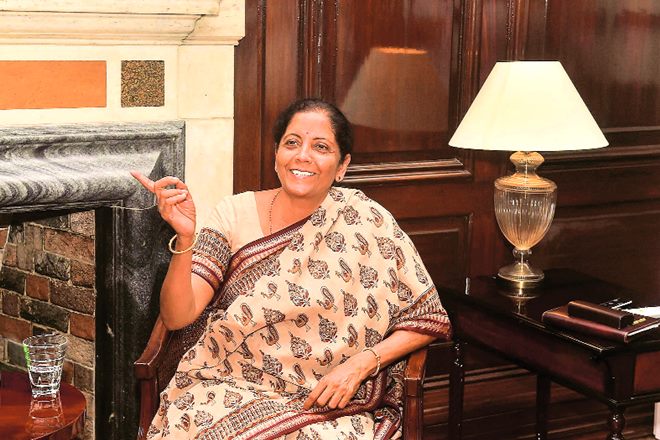
By Aanchal Magazine & Sunny Verma
Nirmala Sitharaman took charge as India’s first woman full-time finance and corporate affairs minister on Friday and her task seems cut out with GDP data released within a few hours of occupying the seat in North Block showing the growth rate for January-March 2019 slipping to 5.8% compared with 8.1% in the corresponding period last year. This is the lowest growth rate in 20 quarters.
For the full year 2018-19, the economy is estimated to have slowed down to 6.8%, lower than the original estimate of 7% for this year, and 7.2% recorded in 2017-18.
The slowdown is accompanied by weakness on the employment front, with the unemployment rate for 2017-18 at 6.1%, according to the Periodic Labour Force Survey (PLFS), also released on Friday along with GDP data. This report was withheld despite being cleared by the National Statistical Commission in December 2018.
Contraction in agricultural growth and sharp slowdown in manufacturing growth weighed on the GDP growth, which had hit the previous low of 5.3% in January-March 2013-14. The latest quarterly growth rate is lower than China, which has also powered down gradually over the last few years.
The economic slowdown spells a challenge for the new government, given that it will leave limited fiscal space to boost growth by spending, leaving a bigger expectation from the Reserve Bank of India (RBI) to push growth through rate cuts. Economists expect RBI to cut the policy rate in its upcoming review on June 6.
The country’s growth rate has been slowing over the last four quarters, as reflected in other leading indicators such as automobile sales, factory output and core sector growth.
‘Agriculture, forestry and fishing’ sector’s Gross Value Added growth contracted 0.1% in January-March from 6.5% growth in previous financial year, while that for manufacturing sector slowed to 3.1% in January-March against 9.5% in the previous fiscal.
Construction sector, however, recorded a pickup with GVA growth of 7.1% in the fourth quarter of 2018-19 against 6.4% in the previous financial year.
For 2018-19, the manufacturing sector grew 6.9% against 5.9% in the previous financial year, while agricultural growth faltered to 2.9% from 5% in the previous fiscal.
As per the new methodology followed by CSO, the GDP is calculated by adding product taxes to the GVA at basic prices, and removing subsidies.
“Clearly the economy is slowing down and these numbers would be a cause of worry for the new central government. Given the budgeted fiscal deficit at 3.4% of GDP, Ind-Ra believes the head room available to provide fiscal stimulus is limited. However, given the current inflation level which is well within the target range RBI may go for a rate cut in the forthcoming second bi-monthly monetary policy review,” said Devendra Kumar Pant, chief economist, India Ratings & Research.


